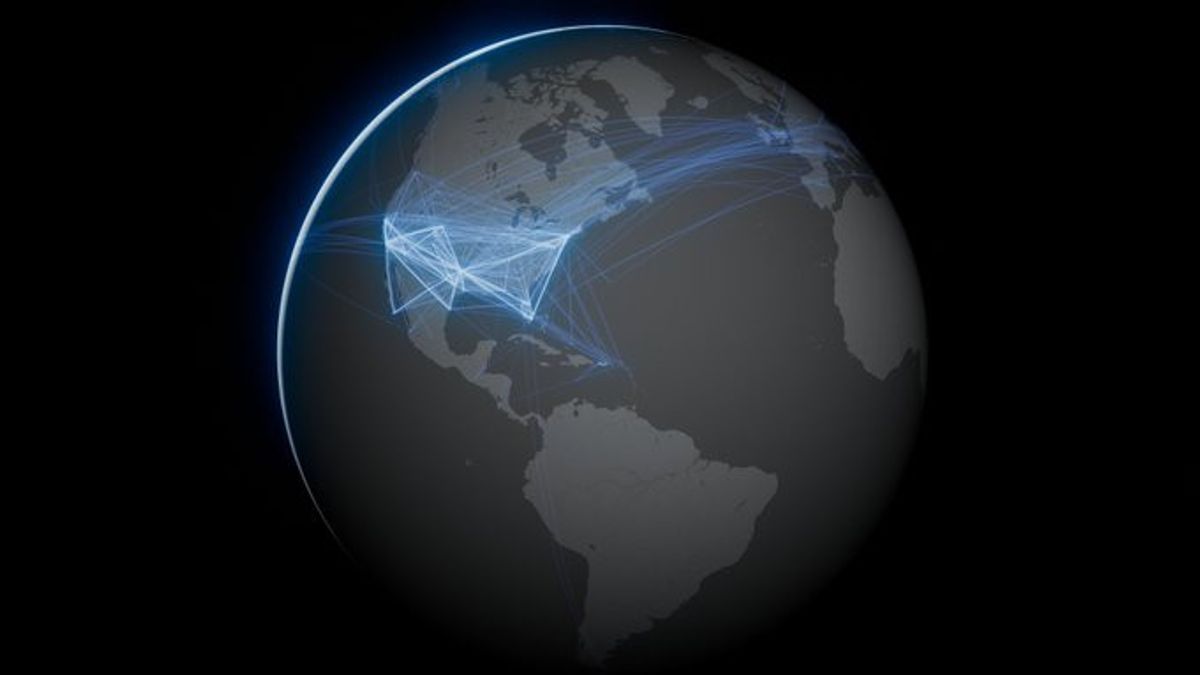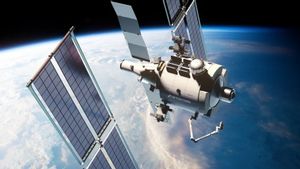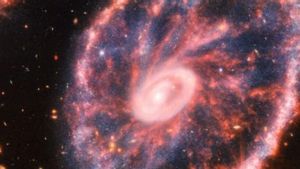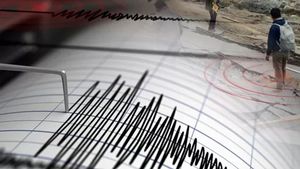JAKARTA - A new study conducted by Dr. Sierra Solter-Hunt, a former NASA physicist, warned that low-cost satellite megaconstellations such as Elon Musk's Starlink could disrupt Earth's magnetosphere. It also revealed the entire life on the planet would be a danger of deadly cosmic radiation.
The study is based on a new estimate that Musk's SpaceX company currently burns more than 2,755 pounds (1.3 tons) of wireless internet satellite debris into Earth's atmosphere every hour. This creates a 'conducting particle' metal layer in orbit.
According to Dr. Solter-Hunt, particles from these satellites at the end of their lifetime can 'disturb or capture the magnetic field' that keeps Earth's atmosphere from escaping, 'with all the highly conducting metal waste piling up in one region.'
Although he noted that this is an 'extreme case,' a charged metal dust layer could lead to an 'atmospheric exfoliation' similar to the ancient fate of Mars and Mercury.
After working on NASA's Stardust comet-gathering spacecraft research team in 2012, Dr. Solter-Hunt spent three years at the US Air Force Research Laboratory. There, he studied the electromagnetic behavior of plasma plumes in low Earth orbit (LEO), the upper atmospheric region where the Starlink orbital network is located.
"Currently we have about 10,000 satellites [in orbit], but in the next 10 to 15 years there will likely be 100,000," said Dr. Solter-Hunt. By the time we reach 100,000 I think it may be too late in terms of this unplanned geoengineering experiment that will happen.
Two pairs of Van Allen belt two donut-shaped regions of small particles energized by cosmic radiation from the sun form the heaviest part of the Earth's magnetosphere. These belts are circular from the Arctic and the Southern Pole of Earth in a magnetic way.
The weight of this vital region is very small compared to heavy satellite debris which can cut ties with the Earth Van Allen belt only has a total mass of 0.00.0004 pounds (or about 0.00018 kilograms).
The light and low mass weight of the magnetosphere, this means that the high volume of heavy satellite debris could have dramatic and unprecedented impacts.
SEE ALSO:
Several magnetosphere experts and planetary scientists at the University of airway in New York, Dr. John Tarduno, specifically criticized the new hypothesis in this paper that the density of metal debris may become so thick that it breaks the Earth from its Van Allen Belt like a magnetic shield.
Dr. Solter-Hunt told DailyMail.com that there were no critics from his critics who had succeeded in bringing down the basis of his thoughts. Even when he had personally asked for deeper constructive criticism.
"I've been in contact with some (critices) to ask for further explanation of how I can improve my research and they simply don't know how I can improve my research on electrostatic signs," said Dr. Solter-Hunt.
"So I don't think there are real scientific critics at this time," he said. "This paper is currently in the process of being reviewed
The English, Chinese, Japanese, Arabic, and French versions are automatically generated by the AI. So there may still be inaccuracies in translating, please always see Indonesian as our main language. (system supported by DigitalSiber.id)


















